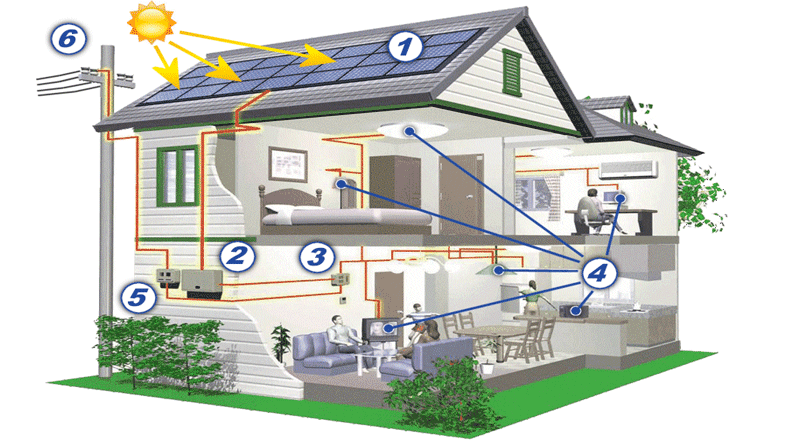Alternative Energy Sources and Reduce Carbon Emissions
You don’t have to be a scientist to learn how to tap alternative energy sources to save money and help reduce dangerous carbon emissions that feed global warming. Many easy, affordable options already exist for everyday applications and one or more of those options will be just right for you and your family.
Geothermal heating and cooling is an alternative energy source that has been around for several decades and is now widely used especially in new construction. Geothermal energy is very cost competitive and consists of a series of pipes buried in the ground and hooked up to heat pumps which move hot and/or cold air through your home. Geothermal energy works for both heating and cooling because the top ten feet or so of the earth’s surface maintains a steady temperature of between 50 and 60 degree Fahrenheit almost everywhere on earth. Heat removed from a home during summer by a geothermal heat pump can also be used to heat water for the house.
Geothermal alternative energy is expensive to install, but once in placed is renewable and inexpensive to maintain. Geothermal is a good alternative energy sources choice if you absolutely have to completely replace your current heating and cooling system or if you are considering new construction.
Solar alternative energy is available to everyone. If you are on a tight budget, passive solar energy can be generated simply by letting sun warm a room in winter or by using a material that holds onto the heat generated by the sun in your floors or walls. Solar panels can be expensive to install but once installed can generate electricity off the grid or can be used to heat water. In some areas of the country solar alternative energy installations are subsidized by state and local governments, so check your state’s website to see if financing or grant money is available. You may be pleasantly surprised.
Another alternative energy source that is catching on quickly in recent years is the pellet or multi-fuel stove. Unlike conventional wood stoves, pellet and multi-fuel stoves are so highly efficient that they produce almost no residue or ash. Most pellet stoves produce about a cup of ash every seven to ten days and they produce no creosote at all. Because they burn so cleanly, they do not require a separate chimney like a wood stove would and can instead be vented directly outside.
Pellets are manufactured from compressed sawdust or saw grass and come in 40-lb plastic bags that look a lot like bags of landscape mulch. Multi-fuel stoves will also burn fruit pits or dried corn. Pellet and multi-fuel stoves are so cost effective that an average household can easily save over a thousand dollars or more a season, just by supplementing or replacing their fossil fuel heating system with a pellet stove.
Finally, biogas is a fairly new but very exciting form of alternative energy that makes use of animal waste and other forms of organic waste to create methane gas, which can be burned to heat water, cook food or fire electric generators thereby creating off-the-grid electrical power.
Biogas is already being effectively used by some communities by siphoning the methane gas from landfills and livestock farms and it is also being used in third world countries to generate power for cooking and hot water. Alternative energy is an exciting and rapidly growing field. Once you discover all the forms of alternative energy currently available as well as all the exciting new form currently in development, you’ll wonder how and why fossil fuel ever became our planet’s default energy source.

